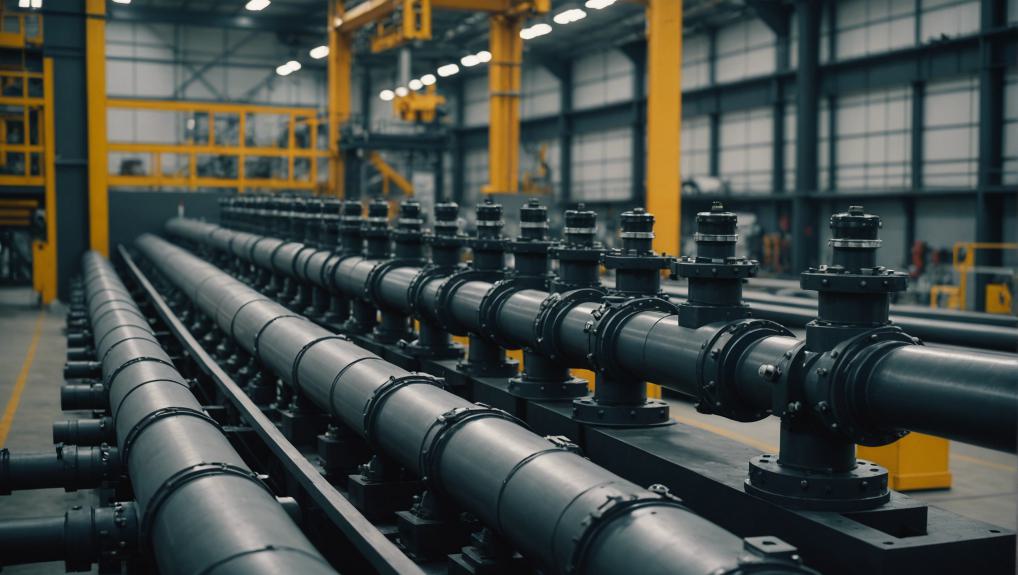
As you explore options to enhance the durability and efficiency of your industrial piping systems, consider the role of fabric expansion joints in offering crucial solutions. You're likely familiar with issues like vibration, thermal expansion, and corrosion, which can compromise system integrity. Fabric expansion joints address these challenges effectively. They dampen vibrations, accommodate thermal movements, and resist corrosive environments, ensuring your systems operate smoothly under diverse conditions. But how exactly do these components adapt to such varied demands, and what makes them superior to other alternatives? Let's discuss the mechanics behind their versatility and how they could be tailored to your specific needs.
Vibration Damping Capabilities
Fabric expansion joints play a vital role in dampening vibrations, protecting your piping systems from damage. When you're dealing with industrial processes involving pumps, compressors, or turbines, these systems often generate significant mechanical vibrations. These vibrations, if not managed, can lead to failures in your piping systems due to fatigue or other structural issues. That's where fabric expansion joints come in. They absorb these vibrations, ensuring that the integrity of your piping remains intact.
You'll find these joints particularly useful in scenarios where rigid connections might transmit excessive vibrations from equipment to the piping system. Unlike metal joints, the flexible nature of fabric joints accommodates the movements without transferring the stress. This flexibility is essential for maintaining the longevity and reliability of your system.
Moreover, the installation of fabric expansion joints is relatively straightforward. They're lighter and easier to handle compared to their metal counterparts, reducing the time and labor costs associated with their installation. So, you're not just protecting your system; you're also optimizing your maintenance and installation processes. Remember, a well-maintained system is less likely to encounter unplanned downtimes, keeping your operations smooth and efficient.
Thermal Expansion Management
Managing thermal expansion in your piping systems is essential, and fabric expansion joints expertly handle this challenge. When the temperature fluctuates, the materials in your piping system expand and contract. This can lead to stress and potential damage unless you've put measures in place to manage these changes. That's where fabric expansion joints come in handy.
Fabric expansion joints are designed to absorb and accommodate the movements caused by thermal expansion in piping systems. They're particularly effective because they're flexible and can be engineered to suit specific requirements. Here's how they benefit your system:
- Flexibility: Unlike rigid components, fabric expansion joints can move in multiple directions, which reduces stress on pipes and supports.
- Customization: You can get these joints tailored to match various temperature ranges and chemical exposures.
- Durability: They're made from materials that can withstand high temperatures and pressures, ensuring long-term reliability.
Corrosion Minimization Techniques
While fabric expansion joints help manage thermal expansion, it's also important to address corrosion in your piping systems to guarantee their longevity and efficiency. You've got several strategies at your disposal to minimize corrosion, which, if left unchecked, can severely compromise your system.
Firstly, selecting the right materials is essential. Opt for corrosion-resistant fabrics and coatings specifically suited for the chemical nature and temperature of the gases or fluids in your system. Stainless steel or aluminum coatings, for example, can offer excellent resistance against corrosive agents.
Next, consider implementing cathodic protection. This technique uses electrical currents to reduce the electrochemical reactions that often lead to corrosion. It's particularly effective in systems exposed to highly corrosive environments or where moisture is prevalent.
Regular maintenance can't be overlooked. Schedule inspections and cleaning to remove any corrosive deposits or blockages that can accelerate wear and tear. During these check-ups, look for signs of deterioration or leakage, which often precede more serious corrosion issues.
Lastly, ensure proper installation and alignment of the fabric expansion joints. Misalignment can lead to abnormal stresses and eventual breaches where corrosion can start. By following these steps, you'll enhance the durability and functionality of your piping systems.
Conclusion
You've discovered how fabric expansion joints are indispensable for your piping systems. They not only dampen vibrations, keeping the system steady, but also manage thermal expansion and combat corrosion effectively.
By adapting to various temperatures and chemical environments, these joints guarantee your setup remains robust and reliable. Consider integrating fabric expansion joints to enhance the longevity and performance of your infrastructure.
They're a smart, adaptable solution that'll save you time and money in the long run.
© Copyright 2024. All RIghts Reserved
